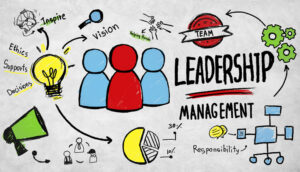Martin Jukes highlights how contact centres of under 50 agents manage their training, recruitment and structure.
Contact centres are often misunderstood, with the expectation that all contact centres are the same. This is totally wrong as there are many differences between them and each contact centre is unique. Even contact centres delivering the same service from different locations have different cultures.
Whether it be size, shape, purpose, role or a number of other factors, it is essential to understand the specific nature of what takes place in the contact centre, especially when making direct comparisons.
For example, a centre that is involved in high-value sales is completely different from one that provides a customer service to citizens.
Be careful in benchmarking yourself with large contact centres
From our day-to-day involvement in the contact centre industry, we work in looking at best practice and benchmarking. We are finding that there are many organisations that do not necessarily understand that these differences exist and are comparing themselves with organisations that are very different from them.
One area that makes an enormous difference is the size of a contact centre. If we compare a small contact centre with a large one we can see enormous differences, as seen in some of the examples below.
Structure

Large (over 250 seats)
Typical structure would include a Head of Contact Centre, Manager, Team Leaders, Supervisors, Advisors, Trainers, Analysts, HR Advisors, etc.
Small (less than 50 seats)
Typically a Manager, Team Leaders and Advisors. Some organisations may have a trainer or analysts, but others may share these responsibilities amongst Team Leaders.
Summary
The role of the Team Leader in a small contact centre is much broader than that in a large contact centre. In a large centre, the Team Leader is often responsible for managing their team and they will have support from analysts, trainers, etc.
Recruitment

Large (over 250 seats)
Large contact centres have an ongoing recruitment campaign. They are constantly recruiting as there is an ongoing turnover of staff. There are often people employed solely to manage the recruitment process on behalf of the contact centre.
Small (less than 50 seats)
Team Leaders and Managers often take the lead on recruitment and only recruit when there is a vacancy. This can result in frequent shortages as short notice periods commence the recruitment activity.
Summary
Recruitment is more efficient in large contact centres as it is a dedicated activity delivered by specialists. Vacancies are generally filled quicker as there is an ongoing campaign, as opposed to smaller centres where recruitment is specific to a single role. This often leads to more vacancies.
Induction training

Large (over 250 seats)
Induction programmes are a constant activity in large contact centres as there is an ongoing turnover of staff. This means that new staff can participate in a formal induction programme where they receive all of the information and training that they require before joining the team.
Small (less than 50 seats)
Induction programmes in small contact centres are much more difficult due to the smaller volumes of new recruits. It is not viable to run a separate course for each individual so a programme is arranged that accommodates most of the activity. Whilst this is bespoke and may provide a more personalised service, it will not always develop a new team.
Summary
Induction programmes are more efficiently implemented in larger organisations and the induction content is often delivered in a more structured timely manner. Small contact centres have to develop bespoke induction training based upon availability of resource to deliver.
Ongoing training

Large (over 250 seats)
In a large contact centre there is an ongoing requirement for training across a broad range of areas. This means that there is the capacity to be able to fill a training course effectively and ensure interaction on that course.
Small (less than 50 seats)
With small centres, training courses are difficult to arrange and deliver as there are not the volumes of attendees to justify running a course. As a result, there is probably more ‘on the job’ training and coaching on technical areas of the role.
Summary
As with other areas, the larger the size of an organisation, the easier it is to deliver training courses. Smaller centres struggle but there is the opportunity to use alternative methods of training (e-learning etc.) to deliver some content. Small contact centres can develop greater relationships with the rest of the organisation through one-to-one training.
Team meetings

Large (over 250 seats)
In large contact centres there will be multiple teams and a communications programme to roll out new information. With there being multiple teams it is possible with planning to arrange for a team to go offline and meet regularly.
Small (less than 50 seats)
In small contact centres it is very difficult to hold team meetings. There are a number of issues, including when to hold the meeting (especially if shift patterns exist), how to go offline (in some centres there is only one team) and the logistics involved in arranging for somebody else to deal with customer contact.
Summary
It is much easier to accommodate team meetings in large centres as there is often a formal process for communication and greater opportunity to get a team together with service covered by other teams.
Efficiency

Large (over 250 seats)
Efficiency is key to most large contact centres and scale is very beneficial. In large centres it is possible to have a greater number of shift patterns and be able to make slight adjustments where required.
Small (less than 50 seats)
Small contact centres can be efficient in the way that they are easier to manage. There can be a closer relationship with staff as they are part of a smaller team that is focused on delivering service.
Summary
Overall, the impact of scale on efficiency is significant. Large contact centres allow greater overall flexibility and the capacity to cover absence.
Technology

Large (over 250 seats)
Large contact centres benefit from a whole range of technologies. Suppliers will develop solutions that generate the most profit so it follows that larger centres are more attractive commercially. They are also based upon an infrastructure that is designed for high volumes.
Small (less than 50 seats)
Some technologies are not suited to small contact centres. For example, workforce management software is based upon complex algorithms that are not as effective in small centres. There are also other solutions that are based upon a minimum number of users for licensing purposes, and small contact centres are often unable to benefit from these.
Summary
A number of different technologies are based upon a minimum size of contact centre. The full range of workforce management and licensed cloud-based applications are not as effective or attractive in small contact centres.
There are real differences between large and small contact centres
So, to summarise, there are real differences between large and small contact centres. The factors identified above are just some of those that are impacted by scale, but they highlight the challenges involved.

Martin Jukes
When organisations are looking at best practice, care must be taken to ensure that the comparison is valid. Failure to do so could have a negative impact, especially if unsuitable practices are copied or inappropriate technologies implemented. Benchmarking must be tailored to relevant peer groups in order for it to be really useful.
With thanks to Martin Jukes, Managing Director at Mpathy Plus
Author: Megan Jones
Published On: 19th Aug 2015 - Last modified: 18th Aug 2025
Read more about - Call Centre Management, Editor's Picks, Management Strategies, Martin Jukes, Recruitment and HR, Team Management, Training and Coaching


















Your article is very biased towards large contact centres. Yes they may be more able to deal with large scale recruitment, training and long term change, but there are great advantages to working in a small contact centre. We all know each other, there is a great friendly relationship between staff, this comes across in how we deal with customers. We can do things quickly because we are agile – we can make a decision one day and roll it out the next. We can take agent feedback on board and change things straight away, it does not take weeks to make small changes and communicate them. All of this means a lot!
We have a team of around 50 in our department. Recruitment is key, particularly communicating with the local job centres. We encourage apprenticeships. Working with agencies has its benefits but also disadvantages.
We had exactly this issue. Martin worked with us to help our higher management team understand that we need to benchmark against similar organisations and once we did we got a better understanding of actually where we needed to improve and where we were doing well. We ultimately changed the focus of our KPIs leading to a happy team and management. This is definitely an area call centres should ensure they review or you can end up throwing resource at unrealistic targets.
I didn’t read this as biased, its pointing out the differences and constraints on small and large call centres. The point is you need to ensure you are benchmarking against organisations of a similar size and call volume or you could be under pressure from your directors to chase unrealistic targets just because “Insert company here” achieve them. Benchmarking like for like will stop the smaller call centre being unfavourably compared to the large call centres and vice versa and allow you to see where your performance really ranks and where you need to focus your time on making improvements.
Great article and comments from Charlotte. Can I add that its much easier as MD to set and maintain a great culture in a smaller centre. This saves a fortune in very low staff churn. We dont have, or need,the expense of a deparment dedicated to recruitment and the savings can be passed on to clients & investors in lower costs/higher per seat commercial value and more personalised higher service levels. Its easier to manage as we are much much closer to the front line call handlers, and our clients needs.
We are also helping improve our industry image and showing other, non call centre, local business’ how its done!
Winners of The Best Small Business in our Chamber of Commerce awards 2014.
Finalists in The Best Small Contact Centre in North West 2015, CallNorthWest.
Basically, some of us smaller operations rock!
I have always worked in large contact centres
Now I manage a small contact centre it empowers both myself and my team leaders to give the quality of service I could only dream about in the past.
Small contact centres can be very flexible and can move meetings/training without much notice.
Training can be done in small groups which results in a better quality of training.
Team work is great as helping each other in busy periods is the norm.
I produce fantastic satisfaction scores as callers are treat as an individual and often recognise the call takers voice
I just wanted to say I agree with the above comments about the advantages of small contact centres. It may take longer to bring on board the technology that the larger ones have, but in our case there is a great deal of local knowledge which spans across not only services we provide, but also those in the local community.
Thanks for reading the article and your comments. The article was never intended to have a bias towards large contact centres, in fact it was probably the opposite in attempting to defend smaller centres! We work with a lot of smaller centres and frequently find that there is an issue with benchmarking and comparison with larger centres. The article aims to highlight some of the differences and explain that it is important to compare with similar contact centres. There are many benefits to being small but understanding the differences is essential in setting KPI’s and measuring performance.
I agree, the article was generalised and did not detail the advantages of a smaller operation.